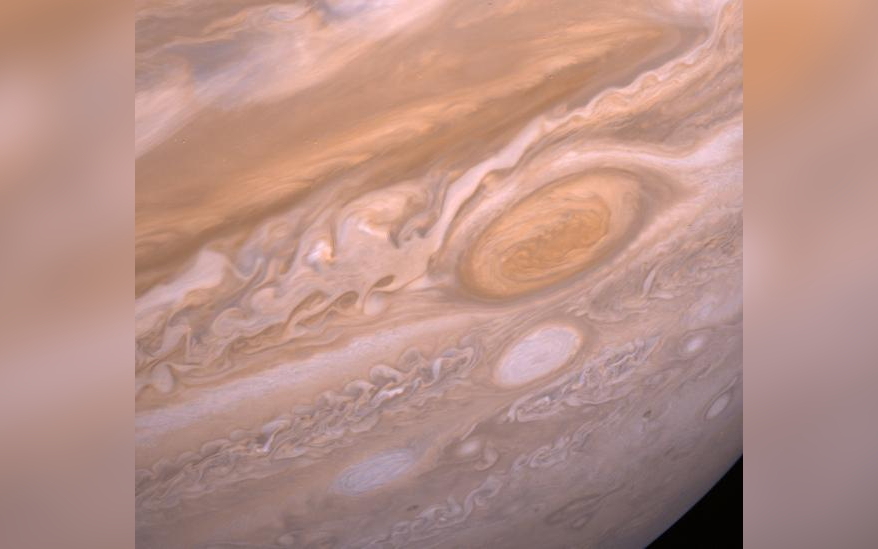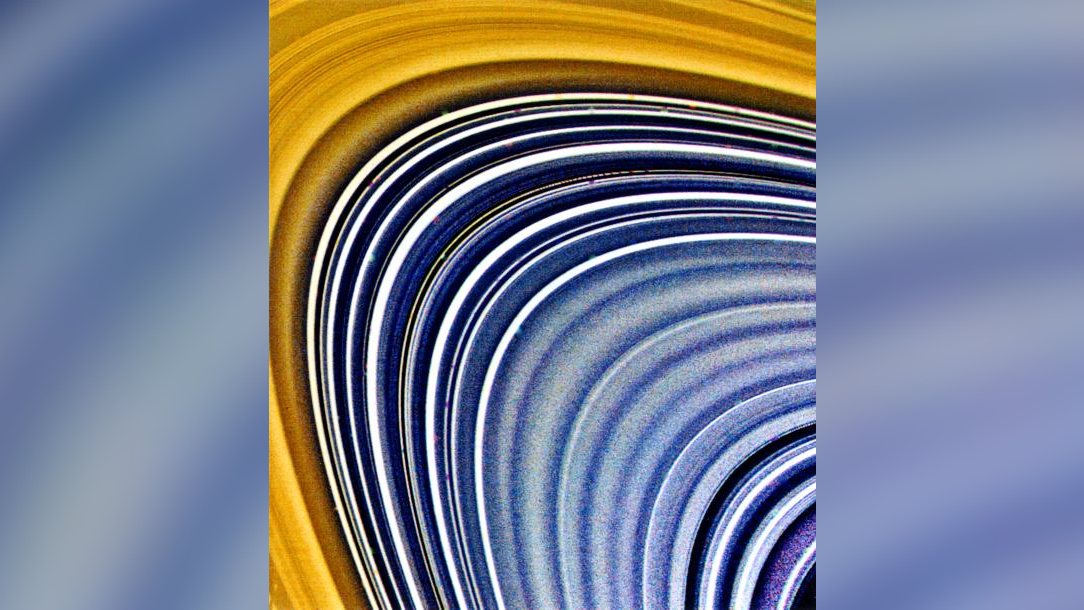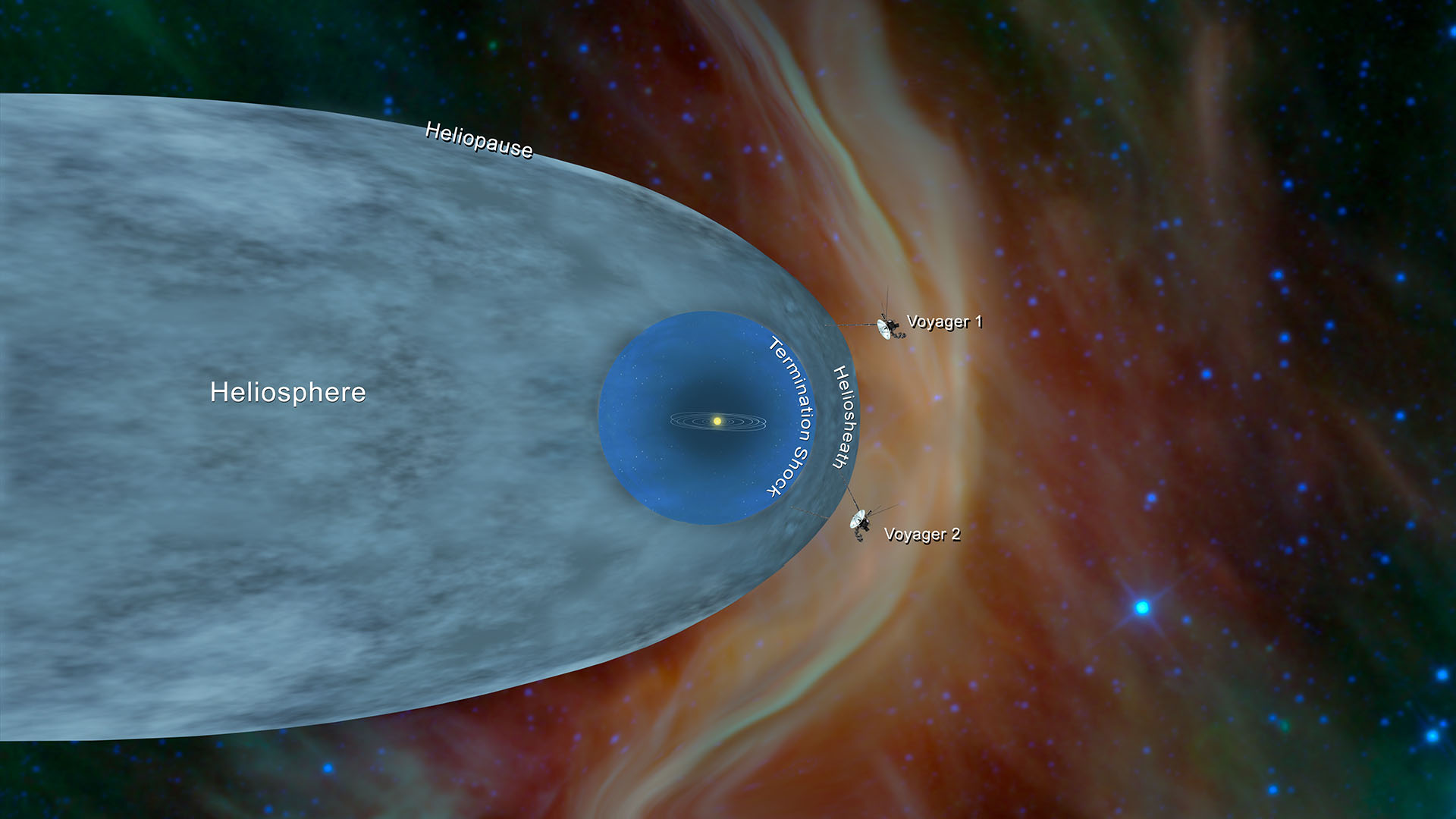Voyager 2: An iconic spacecraft that's still exploring 45 years on
The interstellar vagabond continues to explore the cosmos along with its twin, Voyager 1.

Voyager 2, was the first of two twin probes NASA sent to investigate the outer planets of our solar system.
The probe was launched aboard a Titan IIIE-Centaur from Cape Canaveral Space Launch Complex 41 (previously Launch Complex 41) on Aug. 20, 1977, its twin spacecraft Voyager 1 was launched about two weeks later on Sept. 5. NASA planned for the Voyager spacecraft to take advantage of an alignment of the outer planets that takes place only every 176 years. The alignment would allow both probes to swing from one planet to the next, with a gravity boost to help them along the way.
While Voyager 1 focused on Jupiter and Saturn, Voyager 2 visited both those planets and also ventured to Uranus and Neptune. Voyager 2's mission to those last two planets would be humanity's only visit in the 20th century.
Related: Celebrate 45 years of Voyager with these amazing images of our solar system (gallery)
Voyager 2 is now traveling through interstellar space. As of early November 2018, NASA announced that Voyager 2 had crossed the outer edge of our solar system (Voyager 1 crossed the boundary into interstellar space in 2012.) Voyager 2 is now approximately 12 billion miles (19 billion kilometers) away from Earth and counting!
Voyager 2 as the backup
Although there was not enough money in Voyager 2's budget to guarantee it would still work when flying past Uranus and Neptune, its trajectory was designed to go past those planets anyway. If the spacecraft were still working after Saturn, NASA could try to take pictures of the other planets.
Voyager 2 was ready as a backup for Voyager 1. If Voyager 1 failed when taking pictures of Jupiter and Saturn, NASA was prepared to alter Voyager 2's path to follow Voyager 1's trajectory. It would cut off the Uranus and Neptune option, but still, preserve the possibility of capturing images.
Breaking space news, the latest updates on rocket launches, skywatching events and more!
The backup plan was never executed, though, because Voyager 1 went on to make many discoveries at Jupiter and Saturn, working well enough for NASA to carry out its original plans for Voyager 2.
Jupiter and Saturn flyby
Voyager 2 reached Jupiter in 1979, two years after launching from Cape Canaveral. Since Voyager 1 had just gone through the system four months earlier, Voyager 2's arrival allowed NASA to take valuable comparison shots of Jupiter and its moons. It captured changes in the Great Red Spot and also resolved some of the moon's surfaces in greater detail.
Voyager 2 took pictures of many of Jupiter's satellites. Among its most spectacular findings were pictures from the icy moon Europa. Voyager 2 snapped detailed photos of the icy moon's cracks from 128,000 miles (205,996 km) away and revealed no change in elevation anywhere on the moon's surface.
Proving that moons are abundant around the outer planets, Voyager 2 happened to image Adrastea, a small moon of Jupiter, only months after Voyager 1 found two other Jupiter moons, Thebe and Metis. Adrastea is exceptionally small, only about 19 miles (30.5 kilometers) in diameter at the smallest estimate.
Next in line was Saturn. Voyager 2 became the third spacecraft to visit Saturn when it arrived at its closest point to the ringed planet on Aug. 26, 1981, and took hundreds of pictures of the planet, its moons and its rings. Suspecting that Saturn might be circled by many ringlets, scientists conducted an experiment. They watched the star Delta Scorpii for nearly two and a half hours as it passed through the plane of the rings. As expected, the star's flickering light revealed ringlets as small as 330 feet (100 meters) in diameter.
Uranus and Neptune flyby
Voyager 2's made its closest approach to Uranus on Jan. 24, 1986, becoming the first spacecraft to visit the ice giant. The probe made several observations of the planet, noting that the south pole was facing the sun and that its atmosphere is about 85% hydrogen and 15% helium.
Additionally, Voyager 2 discovered rings around Uranus, 10 new moons and a magnetic field that, oddly, was 55 degrees off the planet's axis. Astronomers are still puzzling over Uranus' orientation today.
Voyager 2's pictures of the moon Miranda revealed it to be perhaps the strangest moon in the solar system. Its jumbled-up surface appears as though it was pushed together and broken apart several times.
The spacecraft then made it to Neptune, reaching the closest point on Aug. 25, 1989. It skimmed about 3,000 miles from the top of the planet's atmosphere and spotted five new moons as well as four rings around the planet. Remarkably, Voyager 2 is currently the only human-made object to have flown by the intriguing ice giant, according to NASA.
Voyager 2's interstellar adventure
On November 5, 2018, Voyager 2 crossed the heliopause — the boundary between the heliosphere and interstellar space. At this stage, the probe was 119 astronomical units from the sun. (One AU is the average Earth-sun distance, which is about 93 million miles, or 150 million kilometers.) Voyager 1 made the crossing at nearly the same distance, 121.6 AU.
According to NASA Jet Propulsion Laboratory (JPL), Voyager 2 has enough fuel to keep its instruments running until at least 2025. By then, the spacecraft will be approximately 11.4 billion miles (18.4 billion kilometers) away from the sun.
But Voyager 2 is destined to roam the Milky Way long after its instruments have stopped working.
In about 40,000 years Voyager 2 will pass 1.7 light-years (9.7 trillion miles) from the star Ross 248, according to NASA JPL. The cosmic vagabond will continue its journey through interstellar space and pass 4.3 light-years, (25 trillion miles) from Sirius in about 296,000 years.
Voyager 2's legacy
Voyager 2's observations paved the way for later missions. The Cassini spacecraft, which was at Saturn between 2004 and 2017, tracked down evidence of liquid water at the planet's icy moons several decades after the Voyagers initially revealed the possible presence of water. Cassini also mapped the moon, Titan, after the Voyagers took pictures of its thick atmosphere.
Voyager 2's images of Uranus and Neptune also serve as a baseline for current observations of those giant planets. In 2014, astronomers were surprised to see giant storms on Uranus — a big change from when Voyager 2 flew by the planet in 1986.
Additional information
To see where Voyager 2 is now you can check out the mission status with resources from NASA. Learn more about the iconic spacecraft with the National Air and Space Museum.
Bibliography
NASA. In depth: Voyager 2. NASA. Retrieved August 17, 2022, from www.solarsystem.nasa.gov/missions/voyager-2/in-depth/
NASA. Voyager - mission status. NASA. Retrieved August 17, 2022, from www.voyager.jpl.nasa.gov/mission/status/
NASA. Voyager - the interstellar mission. NASA. Retrieved August 17, 2022, from www. voyager.jpl.nasa.gov/mission/interstellar-mission

Elizabeth Howell (she/her), Ph.D., was a staff writer in the spaceflight channel between 2022 and 2024 specializing in Canadian space news. She was contributing writer for Space.com for 10 years from 2012 to 2024. Elizabeth's reporting includes multiple exclusives with the White House, leading world coverage about a lost-and-found space tomato on the International Space Station, witnessing five human spaceflight launches on two continents, flying parabolic, working inside a spacesuit, and participating in a simulated Mars mission. Her latest book, "Why Am I Taller?" (ECW Press, 2022) is co-written with astronaut Dave Williams.
- Daisy DobrijevicReference Editor





